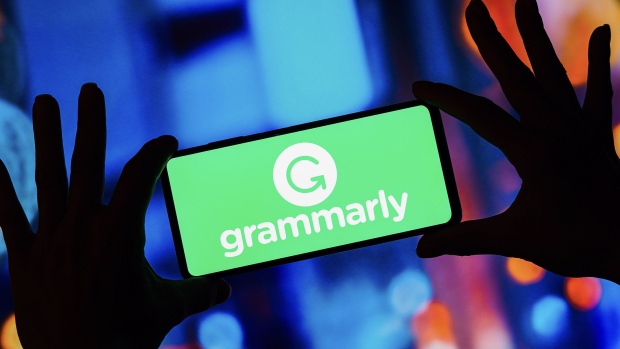May 17, 2023
Grammarly Wants to Expand Its AI From the Classroom to the Office
, Bloomberg News

(Bloomberg) -- Grammarly Inc., a software company known for its writing assistant, is expanding its artificial intelligence offerings in the workplace.
In June, the company is rolling out new features for its enterprise offering, Grammarly Business, including business-specific terms and knowledge in its AI-powered communication assistant called GrammarlyGo. At an event on Tuesday, the company laid out its roadmap for an AI-connected workplace, which eventually will include the capability to summarize key points in a long email string, identifying whether the information is already shared within the organization and composing a reply. Grammarly also aims to connect to other common office applications such as Slack and Gmail, identify priority tasks for employees and compose a response to colleagues across different messaging apps.
“We’ve been helping our users with AI to communicate more effectively for over a decade, now it’s time to go beyond words,” Grammarly Chief Executive Officer Rahul Roy-Chowdhury said at the event.
Read More: A Cheat Sheet to AI Buzzwords and Their Meanings
The move is part of San Francisco-based Grammarly’s effort to ride the generative AI wave and pivot from a grammar-and-spelling checker to a corporate communications and workflow tool. Generative AI uses huge amounts of data to produce text or images in response to a prompt. Grammarly’s software will face fierce competition from big technology companies such as Alphabet Inc.’s Google and Microsoft Corp., which are adding artificial intelligence features to their popular office products.
Roy-Chowdhury, who became CEO May 1 after serving as head of product, started at Grammarly after 14 years at Google working on products including the Chrome browser. He said Grammarly Business will help customers connect all the fragmented apps they use for recruiting, human resources software, messaging and email.
“If a business wants to truly benefit from generative AI, it should be integrated across all applications used by employees,” he said. “Particularly as people write across various platforms and applications, being present where they are can allow for constant learning and automation of workflows and will ultimately save time and promote creativity.”
Google and Microsoft already have announced similar offerings. In March, Google said it will integrate generative AI tools into its Workspace suite including Gmail, Docs, Slides and Sheets. Microsoft also introduced an AI assistant — called Dynamics 365 Copilot — for applications that handle tasks such as sales, marketing and customer service. Based on technology from OpenAI, the software can draft contextual chat and email answers to customer service queries, help marketers come up with client categories to target and write product listings for e-commerce.
Grammarly, which has 30 million daily active users, recently launched GrammarlyGO, a generative AI feature that lets users brainstorm ideas, write, edit and personalize text. Using technology from Microsoft Azure, Grammarly’s models review outputs for bias and the tool can fine-tune the style for users by clicking on prompt tabs like “make it persuasive,” “make it assertive” and “sound confident.”
Roy-Chowdhury said generative AI technology is changing rapidly. “I’m happy to see how it evolves and we’ll always find the best technical solutions to help our users,” he said.
(Updates with detail on product in second paragraph. A previous version of this story corrected the CEO’s start date.)
©2023 Bloomberg L.P.





